Kispiox
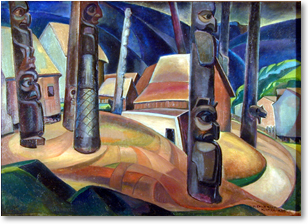
More than a decade after Carr visited Gitxsan villages on the upper Skeena River, A.Y. Jackson journeyed there at the request of Marius Barbeau of the National Museum. Independently both artists documented the same poles; compare the representation of the pole on the extreme left of Carr's watercolour sketch to that on the left of Jackson's pencil sketch. The geometric designs at the base are explained as follows by Barbeau:
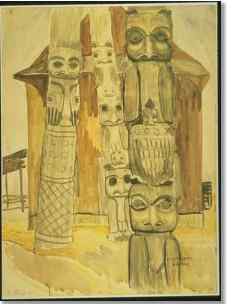
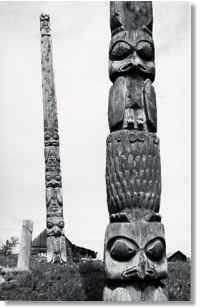
"The pole is known under the name of Sun-dogs. Its figures--all three of which were carved or incised and painted--are the Thunder-bird with a human face, the rows of small, painted circles, which represent Sun-dogs; and the checker-work, at the bottom, the Mountain-fern emblem, in a different style."
Another version of the mountain fern crest is featured on the right-hand side pole in Carr's sketch: "The Mountain-fern crest here appears in full with root and tendrils, between the two lower Owls."
Barbeau 1929:86
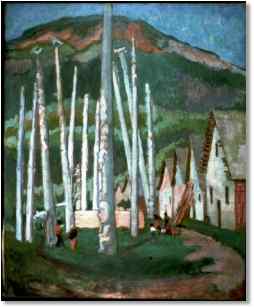
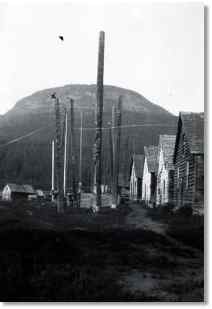
While the field sketches of Carr and Jackson are similar in execution; the finished oils reveal differing approaches to the subject. Totem poles dominate Carr's Kispiox Village although houses and mountains remain evident.
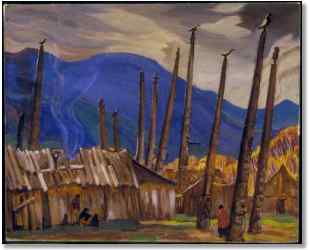
In Jackson's Kispayaks Village, the poles are secondary while buildings in the foreground and mountains in the distance prevail. In both, adults, children and dogs are very much a part of the village scene.
"The prominent mountain on the right of Jackson's Kispayaks Village is gwinwijik, meaning 'Caribou Mountain'.
"Carr's view of the village is looking west. The Gitxsan name for the mountain in the background is Sikadoak; today we use that term for Glen Vowell village."
Neil Sterritt, Gitxsan historian. Macnair, personal communication 1999
On to Kitsegyukla
See more paintings of Kispiox
See more photographs of Kispiox
|

